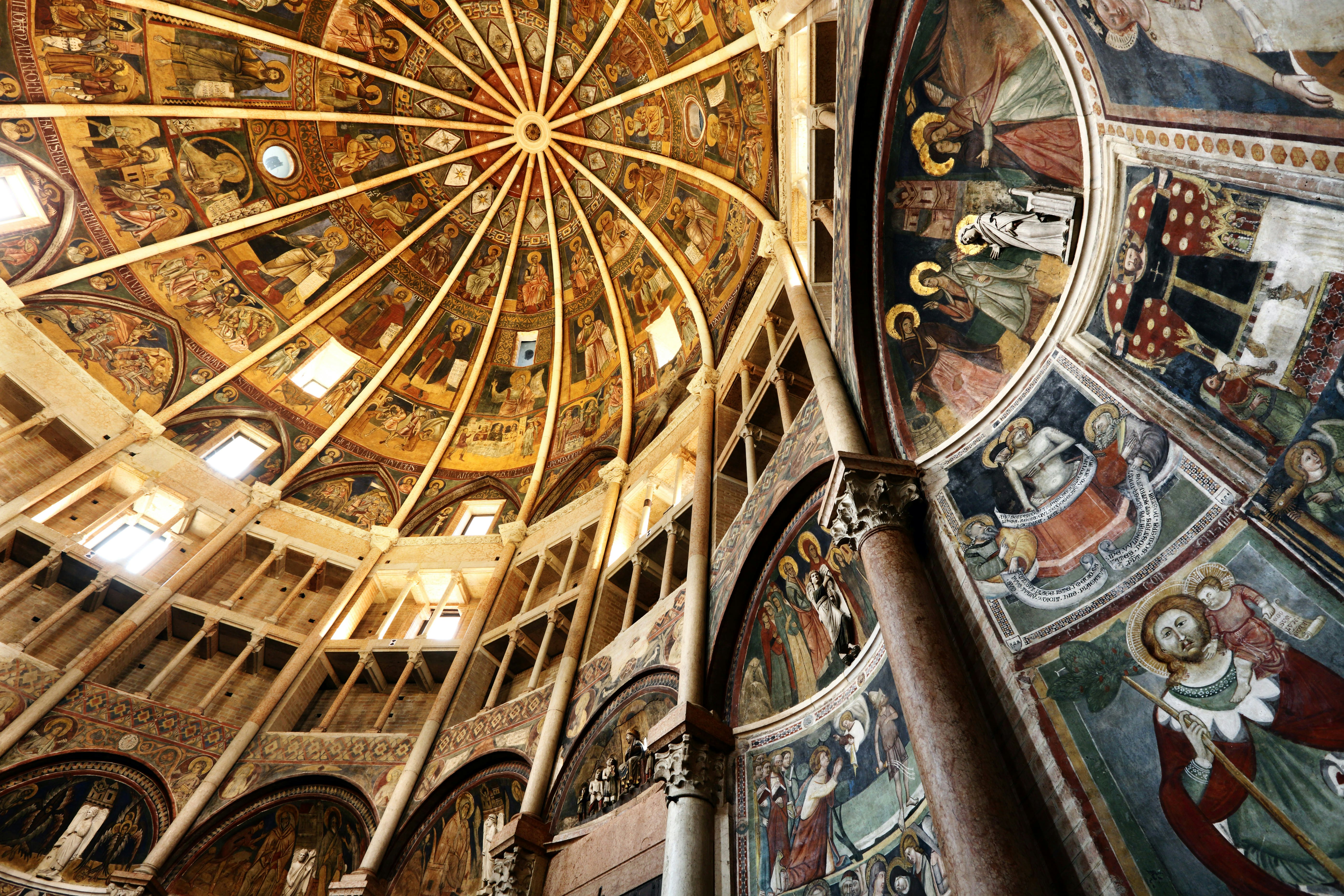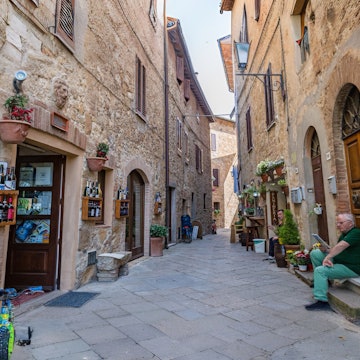
An architect's guide to Italy’s Capital of Culture 2020
Dec 22, 2019 • 4 min read

Parma cathedral with Baptistery leaning tower on the central square in Parma town in Italy. RossHelen / Getty Images
Parma is widely-known for two things: its unmatched cuisine – wheels of Parmigiano and cured meats fill shop windows – and the master opera composer, Verdi. The city, in the Emilia-Romagna region, might be outshone by the more famous Bologna. Yet Parma has been at the center of Italy’s political and cultural scene for centuries, linked to legacies of families such as the Farnese, as well as Napoleon’s French Empire.
Finally nominated as 2020's Italian Capital of Culture, the city showcases masterpiece monuments and "Parma yellow" buildings. As an architect who grew up in Parma, I had the privilege to walk by buildings every day that I had studied in my textbooks. Here’s how you can experience the city's legacy for yourself.
Roman Era
Walking along the city center’s Strada Repubblica, I wonder how many of those around me know this is an urban section of the Via Aemilia, a Roman lifeline completed in 187 BC. Under this modern asphalt, some parts of the actual Roman road are still there. Further west is the Ponte di Mezzo (Middle Bridge), and the recently restored bridge underneath it, the Ponte Romano (Roman Bridge). Two semi-circular arches are visible, with nine still buried – but the bridge remains solid, young and old at the same time.

Middle Ages
One of Europe’s most important medieval monuments is the Battistero di Parma (the city’s Baptistery). Designed by famed Benedetto Antelami, it marks the transition from the Romanesque to the Gothic style. The unique octagonal building – with its pink Verona marble exterior – fascinated me throughout architecture school and to this day. While the exterior is eye-catching, the interior boasts stunning art and a highly frescoed cupola.
Renaissance
Experience the Renaissance in Parma’s 16th-century Oratorio di Saint’Ilario (the Oratory of Saint Ilario), Patron of Parma. Parma is full of special places like this Oratory – a chapel – perhaps unassuming from the outside, but rich in art and history inside. The Oratory opens onto the porticos along Strada Massimo D’Azeglio, which are part of the Old Hospital complex. It’s a rare example of centuries-old hospital architecture, with its unusually high ceilings, wide rooms, and tall windows. The Old Hospital will soon be restored again and function as a new cultural gallery.
Between Renaissance and Baroque
The Chiesa della Steccata, near the main square, is the headquarters of the Sacred Military Constantinian Order of Saint George. Caught between the Renaissance and Baroque styles (some say it’s difficult to draw a line) the Greek-cross design displays a solid and elegant exterior in stark contrast with the masterful artistic displays inside. Famed artist Parmigianino has worked extensively here. The crypt was an addition commissioned by Marie Louise, Napoleon’s second wife, to host Farnese and House Bourbon-Parma nobles’ tombs – among them, the white sepulcher of Carlo Hugo of House of Bourbon-Parma – a direct descendant of Louis XIV of France, the Sun King.
Right behind the Cathedral is the complex of San Giovanni Evangelista. Along a cobblestone side street, the Benedictine church and its convent were one of Italy’s amanuensis centers (the copy of manuscripts and codices) of the 1500s. An original tome is on display in the library; you reach it through a dark, narrow, and short staircase. Even more breathtaking are the church interior decorations: a young Parmigianino’s work is found here, but the masterpiece is the Vision of St. John the Evangelist at Patmos by Correggio. St. John can be seen only from behind the altar. The master artist made this decision for the priests and monks who, while in the choir performing their prayers and hymns, could observe the Evangelist looking up to Christ.
Baroque
Sant’Antonio Abate (1766) designed by famed architect Bibiena (who served many years under the Farnese family) shows a different kind of Baroque architecture. The interior is quite unusual for the double-vaulted ceiling, which creates a spectacular effect: the lower vault is richly decorated with color that seems to exalt, through openings resembling windows, the higher vault’s heavenly frescos, giving the impression of looking out onto the sky.
Why is Parma the 2020 Italian Capital of Culture?
The city has had an important role throughout history – politically and culturally. But Parma also offers unmatched cuisine at its many historic trattorie and restaurants. The city is easily reachable nationally and internationally and its contained historic center is easily accessible for pedestrians and cyclists alike.















